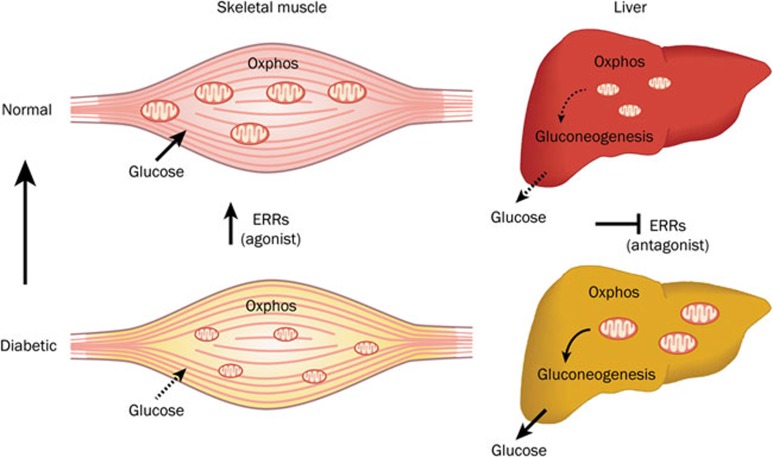Figure 2.
ERRs as pharmacological targets to manage type 2 diabetes. In the skeletal muscles of patients with type 2 diabetes, mitochondrial activity is deficient and cells are less responsive to insulin regarding glucose uptake and usage. Increasing ERR activity using a compound with agonist-like activity would result in increased glucose uptake and usage, as well as increased mitochondrial activity, which would therefore ameliorate insulin signaling in skeletal muscle. In the livers of patients with type 2 diabetes, elevated energy production sustains an increased gluconeogenesis that results in higher blood glucose levels, which leads to hyperglycemia. ERR inhibition would have the benefit of blocking mitochondrial activity, which would therefore reduce the ATP production that feeds gluconeogenesis and restore normal blood glucose levels. This mechanism is similar to metformin, the most prescribed drug for the treatment of type 2 diabetes, which inhibits hepatic mitochondrial activity and gluconeogenesis. In addition, the inhibition of ERRγ activity would also have the advantage of directly blocking gluconeogenesis.

